1. Background
In product development and service provision, establishing standards has played an important role in developing strategies for expanding markets and improving and sustaining the competitiveness of companies. Regarding standardization, the Industrial Standardization Law in Japan was substantially revised in 2019 so that not only goods but also services were subject to standardization. It has also been newly stipulated in the law that efforts on standardization activities in firms, universities, and public R&D agency are required in Japan [1].
However, the extent to which standardization activities have been implemented in organizations such as companies has not been well understood [2]. A survey (Standardization Activity Survey (SoSA)) was conducted to understand the status of standardization activities for companies, universities, and public R&D agencies. The utilization of the results in industrial and intellectual property policies is also examined [3][4].
2. Summary of results
2.1. Implementation of standardization activities
Results indicate that about 60% of all organizations are implementing standardization activities (Table 1). The details of the activities being carried out are (1) standardization activities for products and services, (2) for production processes of products and services, (3) for measurement, and (4) for design and symbols (Table 2).
(1) Product standardization activities refer to product quality standardization activities. Such activities are expected to reduce product costs through the use of common parts. (2) Standardization activities related to product and service production processes refer to activities related to product production methods. Standardization of equipment management and operation methods is expected to improve safety and reduce production management costs. (3) Standardization of measurement methods means activities related to measurement methods for evaluating performance and functions. By standardizing the method of evaluating the performance of products and services, it is possible to compare the performance of products by different producers, and producers can be expected to clarify the function display of their products. At the same time, it is expected that consumers will be able to accurately understand the information of product functions. (4) Design and symbol standardization includes standardization of product shapes, designs, colors, and other factors. These standardizations will facilitate the transmission of non-verbal information and improve intuitive usability and will lead to improvements in the quality and safety of products and services [5][6].
2.2. Organizational development related to standardization activities
Regarding organizational development related to standardization, about 30% of all respondents indicated that they had a department to manage standardization activities (Table 3). In addition, about 80% of the respondents who established the department indicated that they were installed in the organization's headquarters. The number is larger than that for the establishment in individual designated departments, which is about 15% (Table 4). This suggests that the department that manages the current standardization activities often has an organizational structure that plays a role in controlling company-wide standardization activities rather than looking at individual standardization activities in each department [7].
The structure of organizations is likely to change according to corporate strategy [8]. A company's strategy needs to be changed promptly according to the external environment. It can be often difficult because restructuring of the organizational structure within companies to respond to environmental change requires the relocation of personnel. Based on the results of the survey (Table 5), this is thought the reason for not conducting standardization activities. Regarding the reasons for not conducting standardization activities, items such as "do not need standardization for my product service" and "in a position to use standards" are major answers, followed by "lack of management organization for standardization" and "insufficient personnel to carry out standardization activities." The lack of appropriate personnel and management organization is considered to be a cause of obstacles in performing the activities.
3. Future outlook
In order to observe the time-series changes following the implementation in fiscal 2018, this survey is scheduled to be conducted on a successive basis. In addition to conducting the survey in fiscal 2019, I am planning to conduct a survey in fiscal 2020 in line with "World Standards Day" in October [4].
In addition, the results will be published in a compiled summary form and are expected to be used in standard certification policy and innovation policy of the Ministry of Economy, Trade, and Industry (METI). At the same time, the results have been provided to organizations such as the International Organization for Standardization (ISO), the International Electrotechnical Commission (IEC), and the OECD Science and Technology Policy Bureau, with the aim of reflecting and contributing to future international policy planning.
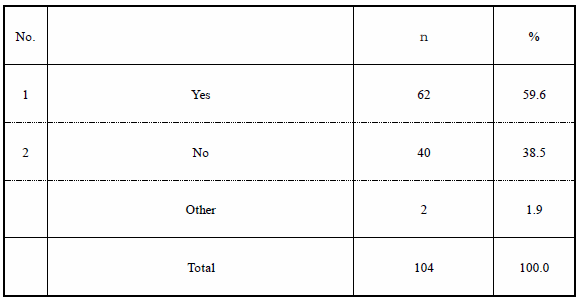
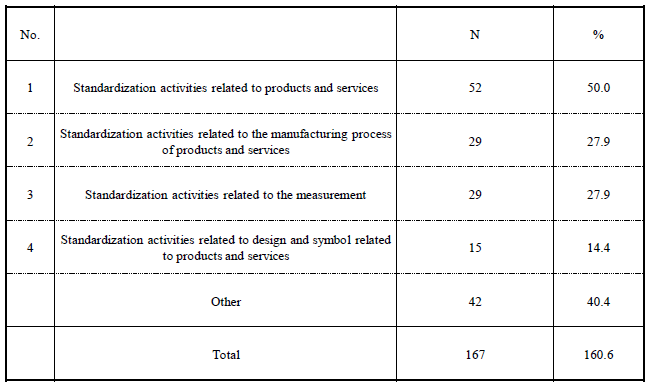
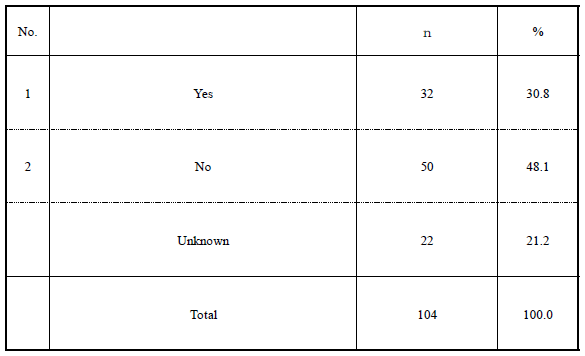
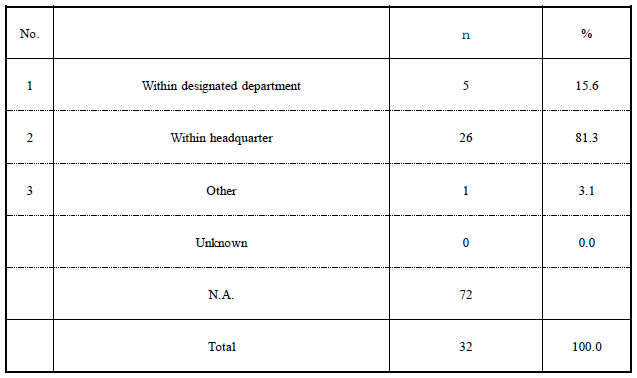
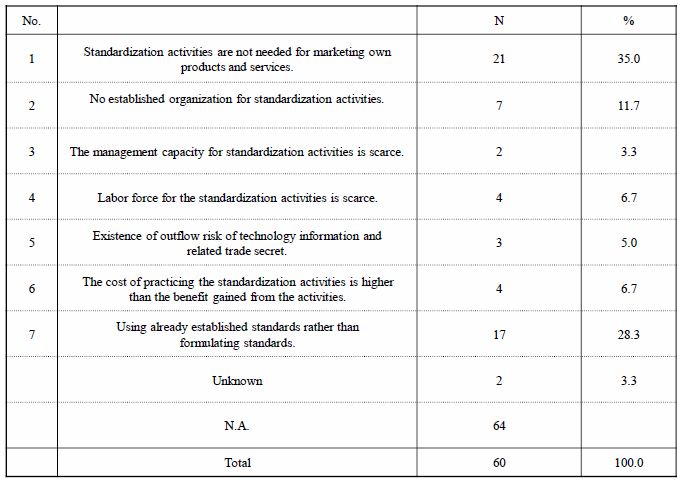
Note: Tables 1, 2, 3, 4, and 5 refer to [3] and are partially modified.
Acknowledgments:
This survey (SoSA) is supported by JSPS KAKENHI (15K03718 and 19K01827: Research Representative, Dr. Suguru Tamura).


